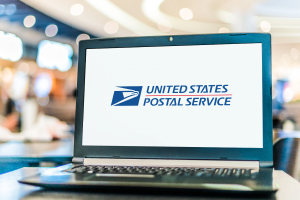- This Google Chrome update could change the fundamentals of browsing - here's who gets to try it first
- Why I recommend this 6-in-1 USB accessory to every MacBook Air user - especially for work
- I just watched Gmail generate AI responses for me - and they were scarily accurate
- Law Enforcement Busts Initial Access Malware Used to Launch Ransomware
- How IT and OT are merging: Opportunities and tips
How Not to Fall for Smishing Scams | McAfee Blog

With a buzz, your phone lets you know you got a text. You take a peek. It’s from the U.S. Postal Service with a message about your package. Or is it? You might be looking at a smishing scam.
“Smishing” takes its form from two terms: SMS messaging and phishing. Effectively, smishing is a phishing attack on your phone. Scammers love these attacks year-round, and particularly so during holiday shopping rushes. The fact remains that we ship plenty of packages plenty often, and scammers use that to their advantage.
Smishing attacks try to slip into the other legitimate messages you get about shipments. The idea is that you might have a couple on the way and might mistake the smishing attack for a proper message. Scammers make them look and sound legit, posing as the U.S. Postal Service or other carriers like UPS, DHL, and FedEx.
Let’s dive into the details of this scheme and what you can do to protect yourself from SMS phishing.
Special delivery: suspicious text messages
To pull off these attacks, scammers send out text messages from random numbers saying that a delivery has an urgent transit issue. When a victim taps on the link in the text, it takes them to a form page that asks them to fill in their personal and financial info to “verify their purchase delivery.” With the form completed, the scammer can then exploit that info for financial gain.
However, scammers also use this phishing scheme to infect people’s devices with malware. For example, some users received links claiming to provide access to a supposed postal shipment. Instead, they were led to a domain that did nothing but infect their browser or phone with malware. Regardless of what route the hacker takes, these scams leave the user in a situation that compromises their smartphone and personal data.
You don’t have to fall for delivery scams
While delivery alerts are a convenient way to track packages, it’s important to familiarize yourself with the signs of smishing scams. Doing so will help you safeguard your online security without sacrificing the convenience of your smartphone. To do just that, take these straightforward steps.
Go directly to the source.
Be skeptical of text messages from companies with peculiar requests or info that seems too good to be true. Be even more skeptical if the link looks different from what you’d expect from that sender — like a shortened link or a kit-bashed name like “fed-ex-delivery dot-com.” Instead of clicking on a link within the text, it’s best to go straight to the organization’s website to check on your delivery status or contact customer service.
Enable the feature on your mobile device that blocks certain texts.
Many spammers send texts from an internet service to hide their identities. You can combat this by using the feature on your mobile device that blocks texts sent from the internet or unknown users. For example, you can disable all potential spam messages from the Messages app on an Android device. Head to “Settings,” tap on “Spam protection,” and then enable it. On iPhones, head to “Settings” > “Messages” and flip the switch next to “Filter Unknown Senders.”
One caveat, though. This can block legitimate messages just as easily. Say you’re getting your car serviced. If you don’t have the shop’s number stored on your phone, their updates on your repair progress will get blocked as well.
Block smishing texts with AI.
Our new AI-powered Text Scam Detector puts up a great defense. It automatically detects scams by scanning URLs in your text messages. If you accidentally tap? Don’t worry, it can block risky sites if you tap on a suspicious link in texts, emails, social media, and more.
Protect your privacy and identity all around.
While McAfee+ plans include Scam Protection, our plans offer strong protection for your identity, privacy, and finances. All the things those smishers are after. It includes credit and identity monitoring, social privacy management, and a VPN, plus several transaction monitoring features. Together, they spot scams and give you the tools to stop them dead in their tracks.
And if the unfortunate happens, our Identity Theft Coverage & Restoration can get you on the path to recovery. It offers up to $2 million in coverage for legal fees, travel, and funds lost because of identity theft. Further, a licensed recovery pro can do the work for you, taking the necessary steps to repair your identity and credit.

